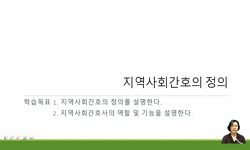This study analyzes smart senior center cases to identify architectural planning elements for integrated elderly care facilities. As Korea rapidly transitions into a super-aged society due to aging and population decline, smart senior centers equipped...
http://chineseinput.net/에서 pinyin(병음)방식으로 중국어를 변환할 수 있습니다.
변환된 중국어를 복사하여 사용하시면 됩니다.
- 中文 을 입력하시려면 zhongwen을 입력하시고 space를누르시면됩니다.
- 北京 을 입력하시려면 beijing을 입력하시고 space를 누르시면 됩니다.

통합돌봄 관점에서 본 스마트경로당 계획 요소 사례연구 = Planning Elements of Smart Senior Centers as Integrated Elderly Care Facilities
한글로보기https://www.riss.kr/link?id=A109582701
- 저자
- 발행기관
- 학술지명
- 권호사항
-
발행연도
2025
-
작성언어
Korean
- 주제어
-
등재정보
KCI등재
-
자료형태
학술저널
- 발행기관 URL
-
수록면
92-102(11쪽)
- 제공처
-
0
상세조회 -
0
다운로드
부가정보
다국어 초록 (Multilingual Abstract)
This study analyzes smart senior center cases to identify architectural planning elements for integrated elderly care facilities. As Korea rapidly transitions into a super-aged society due to aging and population decline, smart senior centers equipped with ICT and AI technologies are being widely implemented to enhance welfare services, especially in rural areas where access to integrated elderly care facilities is limited. Through case studies of five smart senior centers recognized as successful cases by media reports, this research examines spatial characteristics, services/systems, and operational status to propose architectural planning elements. The findings suggest that smart senior centers should: 1) implement basic services (access control, integrated safety management, smart environment) as a priority, 2) select appropriate services and systems according to spatial scale and form, 3) consider community linkages in spatial planning, 4) ensure adequate entrance space for access management systems, 5) utilize open floor plans for customized leisure welfare services, 6) position health monitoring equipment near entrances while ensuring privacy, 7) provide flexible furniture arrangements for various activities, and 8) position smart farms near entrance and kitchen facilities for easier management and utilization. The study provides foundational research for developing design standards and guidelines for smart senior centers as core infrastructure for integrated elderly care.
동일학술지(권/호) 다른 논문
-
국내 유통3사의 복합쇼핑몰 VMD와 체험디자인 공간 특성 연구
- 한국실내디자인학회
- 김운걸
- 2025
- KCI등재
-
- 한국실내디자인학회
- 박영호
- 2025
- KCI등재
-
페르다 콜라탄의 건축 사고로서 ‘미스핏과 하이브리드’의 개념과 도시 맥락적 구현 방법에 관한 연구
- 한국실내디자인학회
- 나성화
- 2025
- KCI등재
-
웰(WELL) 인증을 받은 상업용 쇼룸(Showroom)의 공간계획 및 디자인 특성에 관한 연구
- 한국실내디자인학회
- 임하라
- 2025
- KCI등재




 KCI
KCI DBpia
DBpia



